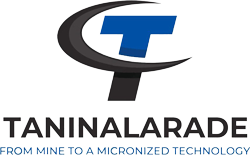Calcium Carbonate
Calcium carbonate is a chemical compound with the formula CaCo3, which is found in nature mostly in the form of quicklime and white mud.
And its pure form, which is pure lime, is less commonly found in nature.
Calcium carbonate (CaCO3) as dry, finely grained powder is most widely used in different industries as a filler or extender
For Calcium Carbonate we explain you:
– Why our calcium carbonate?
– The usage and effects of calcium carbonate in different industries like paint and coating systems
– Different types of calcium carbonate as
– Sources of natural calcium carbonate
– Preparation of micronized calcium carbonate powders in factories:
– What is the difference between GCC & PCC
– Sources of natural calcium carbonate can be studied in two ways:
1- Geologically calcite, aragonite and vaterite:It is a carbonate of pure mineral calcium and is found in nature in three ways:
A) Marble, which is either mined explosively and used as a powder for various industries, or used in coupe as decorative stone.
B) Limestone
C)Mineral gypsum or travertine:
Preparation of micronized calcium carbonate powders in factories:
Preparation of micronized calcium carbonate powders in powder factories:
It is done in two simple ways:
a) GCC: Ground Calcium Carbonate b) PCC: Precipitated Calcium Carbonate
Ground Calcium Carbonate:(GCC)
In the form of “GCC” no chemical activity is performed in the preparation of micronized calcium carbonate powder and just mechanical activity to crush the stones rock in to small size and then go to ballmill . In the GCC carbonate production method, after extracting calcium carbonate rock from the mine by explosive method and transferring the rock lumps from the mine to the factory, they are poured into the hopper of the crusher machine and converted into 5-30 cm pieces and then After leaving the jaw mill, it enters the hammer mill, where it is converted into millimeter granulations, which is suitable for the input of these millimeter materials to the main mill of the system, or the wing of the mill. The output material of the hammer mill is poured into a 200-ton raw material silo by an elevator and stored in this place. At the exit of this silo, a rotary valve has been installed for the uniform exit of materials to enter the wing of the mill.
The material stored in the raw material silo passes through this rotary and enters the wing mill. which is immediately turned into powder by 150 tons of anti-wear steel balls and mill armor.
In this system, the jet pulse method is used to remove the ground materials inside the device. To remove the powdered materials, first the suction fan that is connected to the back filter system starts to suck and the powdered materials are created by the vacuum created from the exit of the separator mill. which is connected to the filter inlet, is transferred and attached to the filter bag in the filter.
As a result of the sneezes of the electric valves installed in this back filter, the powder materials attached to the filter are separated from the bags and poured to the end of the filter, and then through the rotary valve that is also installed at the end of the filter, into the product silo (envelope filler). It has been transported and is ready to be supplied to the consumer market for packaging in bulk and in bags.
Our product list explanation with some of datasheet and usage of each products:
A) Calcium Carbonate:
Calcium carbonate (CaCO3) as dry, finely grained powder is most widely used in different industries as a filler or extender
1- calcium carbonate :
– Why calcium carbonate?
Calcium carbonate is used as a filler in most of formulations to decrease total price as economy material
– The usage of calcium carbonate in different industries
– Different types of calcium carbonate as:
Calcium carbonate’s common name is limestone. It is white. It is extracted from stone minerals calcite and the combination of calcium and carbonate to form a calcium carbonate compound. It is commonly known as chalk.
– What is the difference between us and other partner companies for you?
1- Providing advice and free technical solutions in choosing suitable micronized mineral products with more than 25 years of scientific and technical experience
2- Providing the best quality 3- Reasonable price
3- Guaranteeing quality and returning goods in case of dissatisfaction
What is CaO or High calcium quicklime:
chemically known as calcium oxide (CaO), or commonly referred to as lime, is a widely used chemical compound that originates from calcium carbonate (aka limestone). Quicklime is primarily made up of calcium, magnesium and small amounts of other chemical compounds and containing no more than 5% magnesium content. Our material is routinely tested for quality and consistency, to ensure the right chemistry and physical properties for industrial applications.

